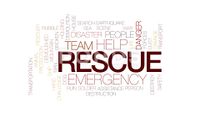IS428 AY2019-20T1 Assign Harvey Kristanto Lauw
|
|
|
|
|
Crowdsourcing for Situational Awareness
In a prescient move, the city of St. Himark released new damage reporting mobile application shortly before the earthquake. This app allows citizens to provide more timely information to the city to help them understand damage and prioritize their response. In this mini-challenge, use app responses in conjunction with shake maps of the earthquake strength to identify areas of concern and advise emergency planners.
Please click here for more information and to download the data.
Problem & Motivation
St. Himark has been hit by an earthquake, leaving officials scrambling to determine the extent of the damage and dispatch limited resources to the areas in most need. They quickly receive seismic readings and use those for an initial deployment but realize they need more information to make sure they have a realistic understanding of the true conditions throughout the city.
In a prescient move of community engagement, the city had released new damage reporting mobile application shortly before the earthquake. This app allows citizens to provide more timely information to the city to help them understand damage and prioritize their response. In this mini-challenge, use app responses in conjunction with shake maps of the earthquake strength to identify areas of concern and advise emergency planners. Note: the shake maps are from April 6 and April 8 respectively.
With emergency services stretched thin, officials are relying on citizens to provide them with much-needed information about the effects of the quake to help focus recovery efforts.
From the collected data, we can use the Seismic Readings of the quake, Responses from the application and Background Knowledge of the city to help the city triage their efforts for rescue and recovery by:
- Determining how their rescue response should change based on damage reports from citizens on the ground.
- Verifying the reliability of the neighbourhood reports.
- Figuring out the changes in conditions over time.
